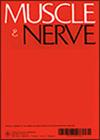磁共振神经成像在胸廓出口综合征神经亚型诊断中的应用
IF 3.1
3区 医学
Q2 CLINICAL NEUROLOGY
引用次数: 0
摘要
神经性胸廓出口综合征(TOS)的诊断具有挑战性,尤其是考虑到神经源性胸廓出口综合征(NTOS)和争议性胸廓出口综合征(DTOS)这两种亚型的临床表现和病因各不相同。TOS 的诊断检查通常包括臂丛神经的磁共振神经成像(MRN)。为评估 TOS,需要对 MRN 成像进行特定的修改,以最大限度地提高空间和对比度分辨率,增加神经节段的清晰度及其与周围骨性结构的关系。手臂定位动态评估用于评估神经丛出口狭窄和受压情况。对单个神经节段的纵向和横截面形态及信号特征进行检查。在 NTOS 患者中,MRN 可能会显示 C8/T1 神经根和/或下部躯干的局灶性撞击,并伴有异常的 T2 加权信号高强度。易发的解剖实体包括颈肋骨、肋骨突起、锁骨骨折后的肥厚胼胝体、先前不完全切除的第一胸肋骨残余以及可变的神经周围瘢痕。相比之下,DTOS 患者的中丛(躯干和分部水平)经常出现信号高强度和增大,肋锁间隙变窄。在进行全面诊断(通常包括电诊断测试)后,患者将接受不同的治疗。所有 DTOS 病例均可考虑非手术治疗;所有 NTOS 或 DTOS 患者在保守治疗失败后,均应转诊接受手术治疗。如果要进行手术治疗,磁共振成像网络有助于制定术前计划。本文章由计算机程序翻译,如有差异,请以英文原文为准。
Magnetic resonance neurography in the diagnosis of neurological subtypes of thoracic outlet syndrome
Neurological thoracic outlet syndrome (TOS) can be challenging to diagnose, particularly given its described subtypes of neurogenic TOS (NTOS) and disputed TOS (DTOS) that exhibit variable clinical presentations and etiologies. The diagnostic workup of TOS often includes magnetic resonance neurography (MRN) of the brachial plexus. Specific MRN imaging modifications for TOS evaluation are required to maximize spatial and contrast resolution to increase the conspicuity of nerve segments and their relationships to surrounding osseous structures. Dynamic assessment with arm positioning is used to evaluate outlet narrowing and compression of the plexus. Individual nerve segments are interrogated for their longitudinal and cross‐sectional morphologies and signal characteristics. In patients with NTOS, MRN may reveal focal impingement of the C8/T1 nerve roots and/or lower trunk with accompanying abnormal T2‐weighted signal hyperintensity. Predisposing anatomical entities include cervical ribs, rib synostoses, hypertrophic callous following clavicular fracture, remnant first thoracic rib from prior incomplete resection, and variable perineural scarring. In comparison, DTOS patients frequently demonstrate signal hyperintensity and enlargement of the mid plexus (trunk and division level), with narrowing of the costoclavicular interval. Following comprehensive diagnostic workup that frequently includes electrodiagnostic testing, patients are directed to different management pathways. Nonsurgical management is considered for all cases of DTOS; all patients with NTOS or DTOS who fail conservative treatment warrant referral for a surgical opinion. If surgery is pursued, MRN can be helpful in preoperative planning.
求助全文
通过发布文献求助,成功后即可免费获取论文全文。
去求助
来源期刊

Muscle & Nerve
医学-临床神经学
CiteScore
6.40
自引率
5.90%
发文量
287
审稿时长
3-6 weeks
期刊介绍:
Muscle & Nerve is an international and interdisciplinary publication of original contributions, in both health and disease, concerning studies of the muscle, the neuromuscular junction, the peripheral motor, sensory and autonomic neurons, and the central nervous system where the behavior of the peripheral nervous system is clarified. Appearing monthly, Muscle & Nerve publishes clinical studies and clinically relevant research reports in the fields of anatomy, biochemistry, cell biology, electrophysiology and electrodiagnosis, epidemiology, genetics, immunology, pathology, pharmacology, physiology, toxicology, and virology. The Journal welcomes articles and reports on basic clinical electrophysiology and electrodiagnosis. We expedite some papers dealing with timely topics to keep up with the fast-moving pace of science, based on the referees'' recommendation.
 求助内容:
求助内容: 应助结果提醒方式:
应助结果提醒方式:


